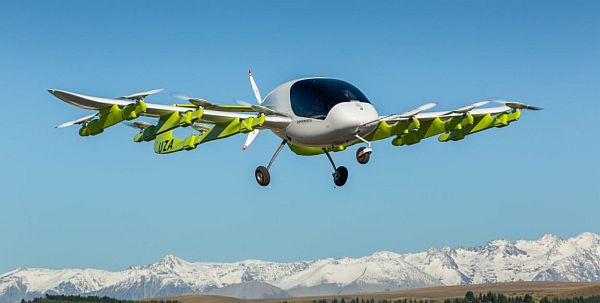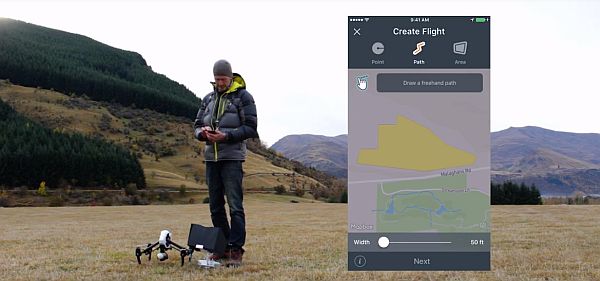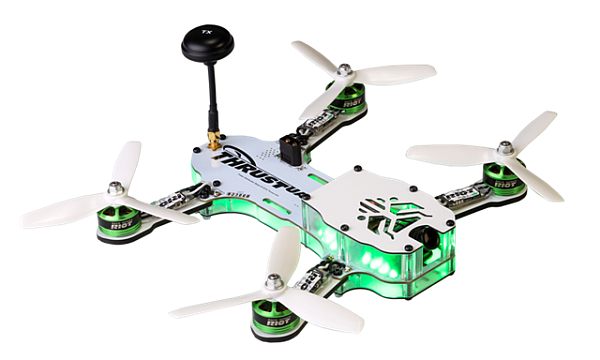Podcast: Play in new window | Download (Duration: 27:51 — 19.1MB)
Subscribe: Google Podcasts | Email | RSS
A perching drone saves battery power, drones that connect communities, considerations for photography drones, Covid vaccination deliveries, secret combat drones, breaking up street racing, Airmap acquires DroneUp, and NOTAMs and drones.
UAV News
Watch this falcon-esque drone perch and carry objects like a bird
Engineers at Stanford University created robotic talons that can be attached to a drone so it can perch and carry objects like a bird. The SNAG (Stereotyped Nature-Inspired Aerial Grasper) has two independently moving legs inspired by the peregrine falcon. The 3D-printed “bones” articulate with motors and fishing lines that act like muscles and tendons.
The legs and claws of the perching drone grasp quickly, in no more than 20 milliseconds. When the SNAG accelerometer detects an impact with the perch, it activates a balancing algorithm and tilts the drone forward, just like a bird does.
Video: Stanford engineers create perching bird-like robot
Drones on Cape Cod: Skyports and MassDOT Partner to Connect Remote Communities
The Massachusetts Department of Transportation’s Aeronautics Division has partnered with Skyports to investigate connecting remote Cape Cod communities. The Department wants to provide emergency medical delivery after storms or other natural disasters and everyday services such as healthcare and logistics. Cape Cod is composed of difficult-to-reach islands and peninsulas.
6 Important Things To Consider Before Buying A Drone For Photography
- Style of the Drone
- Flying Range and Battery Life
- Flight Control System and Transmitter
- Is Raw or DNG Format Support Necessary?
- Camera Quality and Support
- Safety Features and Intelligent Functions
India tests drone delivery of COVID-19 vaccine in remote Jammu
Vaccine deliveries in remote regions can be problematic. But in India where the travel time can be two hours by road, a multirotor drone can make the same trip in 20 minutes. India’s CSIR-National Aerospace Laboratories has developed the octocopter that can carry a 10-kilogram payload over a range of 20 kilometers.
Two New Secret Drone Programs Could Emerge In The Air Force’s Next Budget Proposal
Development money for two classified unmanned air combat vehicles is planned for the 2023 fiscal budget. The combat drones would be designed to operate alongside the Next-Generation Air Dominance Program (NGAD) and the B-21 bomber, both classified programs. Teal Group’s Richard Aboulafia speculates this could be Skyborg – the loyal wingman program. See also, 2 new secret combat drones are in the works, Air Force secretary says.
Drones used to make street racing bust in South Fulton
Street racing has been a problem in South Fulton, Georgia. Now the City of South Fulton Police Department is using drones to watch for street racing, document the activity, and capture images of license plates and the individuals involved. So far 33 people have been charged and four vehicles confiscated.
DroneUp Acquires Airmap: Another Move Towards Drone Ops on a Very, Very Big Scale
DroneUp is a drone services provider with a trained pilot network, proprietary software, and a relationship with Walmart that includes a financial investment and a drone delivery operation. AirMap has an Unmanned Aircraft System Traffic Management (UTM) service which supports as many as 100,000 flights per day. Together, the companies can scale up operations and position for future BVLOS flights.
Name change signifies a bigger mission for NOTAMs
The meaning of the acronym NOTAM has changed from “Notice to Airmen” to the gender-neutral “Notice to Air Missions.” The new acronym now easily applies to the un-crewed flights of free balloons and drones.
UAV Video of the Week
Video: Beautiful drone footage of tree-lined NY roads and geometric fields | SWNS
This beautiful aerial footage takes you above a winding country road and geometric fields under the setting autumn sun. From the UK journalism team at SWNS.





